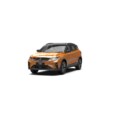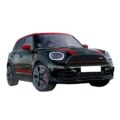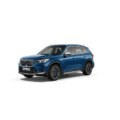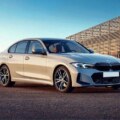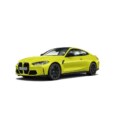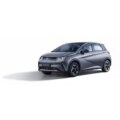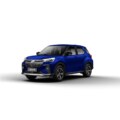Proton X50 1.5T Executive



















-
Fuel Type: Petrol
-
Engine Power: 1477 cc
-
Seat: 5 Seats
-
Top Speed: 195 km/h
-
Transmission: Automatic
Full Specifications
Basic
| Dealership A car dealership in Malaysia is a business that sells new and used cars to consumers. These dealerships typically operate as authorized representatives of specific automotive brands, such as Toyota, Honda, Ford, etc. They may also offer a variety of services, including financing options, vehicle maintenance, and after-sales support. |
CS KIARA AUTO SDN BHD +60362528300 No. 560, Batu 3 ½, Jalan Ipoh, Kuala Lumpur, 51200 |
| Monthly Instalment To get accurate and up-to-date information on car monthly installment amounts in Malaysia, it's recommended to contact banks, financial institutions, or car dealerships directly. They can provide you with personalized quotes based on your financial situation and the specific details of the car you're interested in purchasing. | RM 968 x 84 |
| Down Payment Value Down payment requirements can vary depending on the car model, dealership, and financing terms. Typically, car down payments in Malaysia can range from 10% to 20% of the car's purchase price. It's essential to check with specific car dealerships or financial institutions for the most accurate and recent information. | RM 18,700 |
| Model A car model refers to a specific design or version of a vehicle produced by a manufacturer. Each car model typically has its own unique name, features, specifications, and styling. For example, within a car manufacturer's lineup, you might find multiple models such as sedans, SUVs, trucks, and sports cars, each with different variations and trim levels. Car models can vary in size, performance, fuel efficiency, technology features, and price range, catering to different preferences and needs of consumers. Examples of car models include the Toyota Camry, Ford Mustang, Tesla Model S, and BMW X5. | X50 1.5T Executive |
| available The availability of cars can vary depending on location, market demand, and the production schedules of automotive manufacturers. Generally, cars are available for purchase or lease from dealerships, online marketplaces, and private sellers. You can find a wide range of car models, brands, and types to suit different preferences and needs, including sedans, SUVs, trucks, hatchbacks, coupes, and electric vehicles. Additionally, car rental services offer temporary access to vehicles for specific durations, such as short-term travel or special events. Keep in mind that availability may be influenced by factors like inventory levels, the popularity of certain models, and regional regulations. |
Size & Volume
| Kerb Weight The kerb weight of a car refers to the total weight of the vehicle when it's fully equipped with all standard equipment, essential fluids such as oil and coolant, but excluding any passengers or cargo. Essentially, it's the weight of the car itself without any additional load. Kerb weight is an important specification as it affects various aspects of a vehicle's performance, such as acceleration, braking, fuel efficiency, and handling. It's often listed by manufacturers in vehicle specifications to provide buyers with an idea of the car's base weight before any additional items are added. | 1345 kg |
| Width The width of a car refers to the measurement across the widest point of the vehicle when viewed from the side. It includes the width of the body of the car, including any mirrors or protrusions. Car widths can vary significantly depending on the make, model, and intended use of the vehicle. Compact cars tend to have narrower widths, making them easier to maneuver in tight spaces, while larger vehicles like SUVs and trucks typically have wider widths to accommodate more passengers and cargo. Specific dimensions can usually be found in the technical specifications provided by the manufacturer for each model. | 1800 mm |
| Wheel Base The wheelbase of a car refers to the distance between the centers of the front and rear wheels. It's an essential measurement because it affects several aspects of a vehicle's performance, including stability, handling, and interior space. A longer wheelbase typically results in a smoother ride and better stability, especially at high speeds, as it reduces the tendency for the vehicle to pitch and roll. Additionally, a longer wheelbase often translates to more interior space, particularly in the rear seats. | 2600 mm |
| No Of Doors The number of doors on a car refers to the openings through which passengers can enter and exit the vehicle. | 5 |
| Fuel Tank Capacity (litres) | 45 L |
| Length The length of a car refers to the distance from the front bumper to the rear bumper. Car lengths vary significantly depending on the make, model, and type of vehicle. | 4330 mm |
| Height The height of a car refers to its vertical measurement from the ground to the highest point of the vehicle. Car heights can vary widely depending on the make, model, and type of vehicle. Generally, cars have heights ranging from around 4 to 6 feet (1.2 to 1.8 meters). However, this can vary significantly depending on factors such as whether it's a sedan, SUV, truck, or sports car, as well as design considerations like ground clearance and aerodynamics. SUVs and trucks tend to have higher heights compared to sedans and sports cars due to their larger size and elevated chassis. | 1609 mm |
| Turning Radius The turning radius of a car refers to the smallest circular turn a vehicle can make without hitting an obstacle or running off the road. It's essentially the diameter of the smallest circle that the outer edges of the car's tires trace when the car turns its wheels to the maximum angle. Turning radius is an important factor in determining how easily a car can navigate tight spaces, make U-turns, or maneuver through parking lots and narrow streets. It's influenced by various factors including the wheelbase, steering system, tire size, and the design of the car's suspension. Manufacturers often provide specifications for a car's turning radius in its technical details. | 5.4 m |
| Seating Capacity The seating capacity of a car refers to the maximum number of passengers it can comfortably accommodate. This number typically includes both the driver and the passengers. | 5 Seats |
Details Powertrain
| Engine A car engine, also known as a motor, is the component of a vehicle responsible for converting fuel into mechanical energy. This energy is used to power the vehicle and drive its wheels. |
1.5L Petrol Engine, In-line 3 Cylinder 12 Valve DOHC |
| No Of Cylinders The number of cylinders in a car refers to the total count of cylindrical chambers where fuel combustion takes place. Each cylinder contains a piston that moves up and down, generating power through the combustion process. | 3 |
| Valve Configuration The valve configuration of a car engine refers to the arrangement and operation of the intake and exhaust valves within the engine's cylinder head. The valve configuration plays a crucial role in determining how efficiently the engine can intake air and fuel and expel exhaust gases during the combustion process. |
DOHC |
| Fuel Supply System The fuel supply system in a car is responsible for delivering fuel from the fuel tank to the engine where it's burned to power the vehicle. | MPI |
| Valves Per Cylinder The term valves per cylinder refers to the number of intake and exhaust valves that are present in each cylinder of an internal combustion engine. | 4 |
Presentation
| Fuel Type Malaysia primarily uses petrol (gasoline) and diesel as fuel types for cars. Petrol is commonly available in various octane ratings, such as RON95 and RON97, with RON95 being more widely used due to its lower cost. Diesel is also used for vehicles that run on diesel engines. | Petrol |
| Power Car engine power refers to the ability of the engine to produce mechanical energy, typically measured in horsepower (hp) or kilowatts (kW). Engine power is a crucial factor in determining a car's performance, including its acceleration, top speed, and towing capacity. | 148 hp |
| RPM At Max Power The RPM (revolutions per minute) at which a car's engine produces its maximum power, often referred to as "peak power RPM," varies depending on the specific engine design, its size, and its intended use. In general, the peak power RPM tends to be higher in engines designed for performance and racing, while it may be lower in engines designed for everyday driving and fuel efficiency. | 5500 RPM |
| Engine Displacement Engine displacement, often referred to simply as displacement, is a measure of the total volume of all the cylinders in an internal combustion engine. It's usually measured in liters (L) or cubic centimeters (cc). | 1477 cc |
| Torque Torque is a measure of the rotational force applied to an object, such as a car's wheels, to produce rotational motion. In the context of cars, torque is often referred to as engine torque, which is the twisting force generated by the engine's crankshaft. It's what allows the car to accelerate and overcome resistance, such as friction and gravity. | 226 Nm |
| RPM At Max Torque The RPM (revolutions per minute) at which a car's engine produces maximum torque varies depending on the engine design, fuel type, and other factors. In general, the engine's maximum torque is achieved at a certain RPM range, commonly referred to as the "torque peak" or "peak torque RPM." This RPM range can vary significantly among different engines. | 1500-4000 RPM |
Direction Control
| Power Steering Power steering is a system in automobiles that helps drivers steer the vehicle more easily by using hydraulic or electric assistance. In traditional hydraulic power steering systems, a hydraulic pump driven by the engine helps to apply force to the steering mechanism, making it easier for the driver to turn the steering wheel, especially at low speeds or when stationary. | Yes |
| Steering Column The steering column is a crucial component of a vehicle's steering system. It is a vertical shaft that connects the steering wheel to the steering mechanism of the vehicle, allowing the driver to control the direction of the vehicle by turning the wheel. | Adjustable |
| Steering Gear Type Car steering gear refers to the mechanism responsible for controlling the direction of the vehicle. There are several types of steering gears used in cars, each with its own advantages and applications. | Rack & Pinion |
| Adjustable Steering Column |
Yes |
| Steering Type Car steering types refer to the mechanisms used to control the direction of the vehicle. Here are some common steering types: Rack and Pinion Steering, Recirculating Ball Steering, Power Steering, Electronic Power Steering (EPS), Four-Wheel Steering, Steer-by-Wire. | Electric Power |
Chassis Control Systems
| Front Brake Type Cars commonly employ two types of front brake systems: disc brakes and drum brakes. Disc brakes and drum brakes. | Ventilated Discs |
| Front suspension The front suspension of a car is the system of components that connects the front wheels to the vehicle's chassis or frame. Its primary function is to support the weight of the vehicle, absorb road shocks, and provide a smooth and stable ride for the occupants. | MacPherson Strut |
| Rear Brake Type | Discs |
| Rear suspension The rear suspension of a car is the system of components that supports the rear axle or rear wheels and helps to absorb shocks and vibrations from the road surface, providing a smoother ride and better handling. | Torsion Beam |
Gearbox
| Type Car gearboxes come in various types, each serving a specific purpose and offering different driving experiences. Here are some common types of car gearboxes: manual transmission (MT), automatic transmission (AT), continuously variable transmission (CVT), dual-clutch transmission (DCT), automated manual transmission (AMT), semi-automatic transmission, and sequential manual transmission (SMT). |
Automatic |
| Drive Type | 2WD |
| Steering Wheel Gearshift Paddle The steering wheel gearshift paddle, commonly known as paddle shifters, is a feature found in many modern cars equipped with automatic transmissions or dual-clutch transmissions. These paddles are typically located behind or alongside the steering wheel, within easy reach of the driver's fingertips. | 7-Speed |
Wheel assembly
| Alloy Wheels Alloy wheels are wheels made from an alloy of aluminum or magnesium metals, as well as other elements. | Yes |
| Alloy Wheel Size Car alloy wheel sizes vary depending on the make and model of the vehicle, as well as the preferences of the owner. Common alloy wheel sizes range from 14 inches to 22 inches in diameter, with widths typically ranging from 6 inches to 12 inches. |
17 Inch |
| Tyre Type Car tires come in various types, each designed for specific purposes and driving conditions. | Radial |
| Tyre Size Car tire sizes can vary depending on the make and model of the vehicle, as well as the specific requirements of the manufacturer. Tire sizes are typically expressed in a standardized format, such as "205/55R16" or "265/70R17". | 215/60 R17 |
| Wheel Covers Car wheel covers, also known as hubcaps or wheel trims, are decorative covers that fit over the center of a car's wheels. |
No |
| Wheel Size Car wheel size refers to the diameter of the wheel, typically measured in inches. The wheel size is an important specification that affects various aspects of a vehicle's performance, including handling, ride comfort, and aesthetics. | R17 |
Ease & Amenities.
| Air Conditioner A car air conditioner is a system installed in an automobile that cools and dehumidifies the air inside the vehicle cabin. It works on the principle of refrigeration, similar to the air conditioning systems used in buildings but adapted for the smaller space and power constraints of a vehicle. | |
| Heater A car heater is a component of the vehicle's HVAC (heating, ventilation, and air conditioning) system designed to provide warmth to the interior cabin during cold weather. It works by using excess heat generated by the engine's cooling system to warm up the air that is circulated inside the car. | |
| Ventilated Rear Seats Ventilated rear seats refer to seats in the back of a vehicle equipped with a ventilation system that helps keep passengers comfortable by circulating air through the seat cushions. This feature is designed to enhance comfort during travel, particularly in warm weather or for long journeys, by preventing passengers from becoming overheated or sweaty while sitting in the rear seats. Ventilated seats often have perforations or small openings in the seat surface through which air is circulated, and they may also include fans or air channels to distribute the airflow evenly. | |
| Engine Start/Stop Button The Engine Start/Stop Button, often referred to simply as the Start Button, is a feature found in many modern cars. Instead of using a traditional key to start the engine, this button allows the driver to start or stop the engine with the push of a button. | |
| Cup Holders-Front Front cup holders in a car are compartments or recessed areas designed to hold beverage cups, bottles, or cans within easy reach of the driver and front-seat passenger. They are typically located in the center console area between the driver and passenger seats or integrated into the dashboard design. Cup holders help prevent spills and provide a convenient place to store drinks while driving, allowing occupants to stay hydrated or enjoy beverages while on the go. Some modern cars may feature additional features such as adjustable sizes, heating or cooling functions, or illumination for cup holders to enhance their functionality and convenience. | |
| Adaptive Cruise Control Adaptive Cruise Control (ACC) is an advanced driver assistance system (ADAS) designed to enhance driving comfort and safety by automatically adjusting a vehicle's speed to maintain a safe following distance from the vehicle ahead. Unlike traditional cruise control systems that maintain a constant speed set by the driver, adaptive cruise control can automatically accelerate or decelerate based on the traffic conditions. | |
| Automatic Headlamps Automatic headlamps, also known as automatic headlights or auto-dimming headlights, are a feature in modern cars that automatically turn on the vehicle's headlights when certain conditions are met. These conditions typically include low ambient light levels (such as at dusk or in dark tunnels) or when the windshield wipers are activated (indicating poor weather conditions). | |
| Memory Seats Car memory seats are a feature found in many modern vehicles that allow drivers to save and recall their preferred seating positions. Instead of manually adjusting the seat, mirrors, and steering wheel each time they enter the car, the driver can program the desired settings into the memory system. This typically involves adjusting the seat's position, including factors like seat height, distance from pedals and steering wheel, and sometimes even lumbar support and seat angle. Once programmed, the system stores these settings and associates them with a specific key fob or driver profile. | |
| Wireless Charger A car wireless charger is a device designed to charge compatible smartphones or other electronic devices without the need for a physical connection. It typically consists of a charging pad or dock installed within the car's interior, which utilizes electromagnetic induction to transfer power wirelessly to the device placed on it. | |
| Glove Box Cooling Car glove box cooling refers to a feature in some vehicles where the glove compartment, traditionally used for storing items like gloves, manuals, or other small personal belongings, is equipped with a cooling mechanism. This feature allows the glove box to maintain a lower temperature than the surrounding cabin, similar to a refrigerator or cooler. | |
| Ventilated Front Seats Ventilated front seats, also known as cooled seats, are a feature commonly found in modern cars, particularly in higher-end models. These seats are equipped with a built-in ventilation system that circulates air through the seat cushions and backrests to help keep occupants cool and comfortable, especially during hot weather or long drives. | |
| Accessory Power Outlet A Car Accessory Power Outlet, commonly known as a cigarette lighter socket or power outlet, is a standard feature found in most vehicles. Originally designed to power electric cigarette lighters, these outlets have evolved to accommodate various electronic devices and accessories. | |
| Bottle Holder A car bottle holder is a small compartment or attachment within a vehicle designed to securely hold bottles or beverage containers while driving. These holders come in various forms, including built-in compartments in the car's interior, fold-out holders attached to the dashboard or center console, or accessories that can be added to existing cup holders to accommodate bottles of different sizes and shapes. Car bottle holders are convenient for keeping drinks within easy reach of the driver and passengers during travel, helping to prevent spills and maintain a tidy vehicle interior. | |
| Keyless Entry Keyless entry is a technology that allows you to unlock and lock your car doors remotely without using a traditional physical key. Instead of inserting a key into the door lock, keyless entry systems use electronic signals to communicate between the key fob or remote and the car's locking mechanism. | |
| Power Windows Front Car power windows front refers to the front windows in a car that can be operated electronically rather than manually. Power windows allow the driver and passengers to open or close the windows with the push of a button, typically located on the door panel near the window. This feature adds convenience and ease of use, especially for adjusting windows while driving. It's a common feature in modern cars, offering comfort and control to the occupants. | |
| Follow Me Home Headlamps Follow Me Home" headlamps are a feature in some vehicles where the headlights remain illuminated for a short period after the driver has exited the vehicle. This function helps illuminate the path to the driver's destination, such as their front door or entrance, after they have parked and locked the car. It enhances safety by providing visibility in dark or poorly lit areas, such as driveways, parking lots, or residential streets, reducing the risk of accidents or tripping hazards. The headlights automatically turn off after a predetermined time or when the driver unlocks the vehicle again. | |
| Head-Up Display A Car Head-Up Display (HUD) is a transparent display that projects information onto the windshield of a vehicle, allowing the driver to view critical data without needing to take their eyes off the road. This technology originated in military aircraft but has become increasingly common in modern cars. | |
| Air Quality Control Car air quality control refers to the systems and technologies implemented in vehicles to monitor and improve the quality of air inside the cabin. These systems are designed to ensure that passengers are breathing clean, fresh air while traveling. | |
| Rear Reading Lamp A car rear reading lamp is a light fixture located in the interior of a vehicle, typically positioned above the rear seats. Its purpose is to provide illumination for passengers sitting in the back seats, allowing them to read, find items, or engage in activities during nighttime travel or in low-light conditions. Rear reading lamps are usually controlled by a switch near the lamp itself or integrated into the vehicle's overhead console. They often have adjustable settings for brightness to suit passengers' preferences. These lamps contribute to passenger comfort and convenience, especially during long journeys or when traveling at night. | |
| Central Console Armrest The car central console armrest is a feature typically found in the interior of a vehicle, positioned between the front seats. It serves as a comfortable resting place for the driver's or front passenger's arm during long drives. This armrest often contains storage compartments or cup holders for convenience, allowing occupants to store small items such as phones, keys, or beverages within easy reach. Some car central console armrests also come with additional features like USB ports or power outlets for charging electronic devices. Overall, it enhances comfort and convenience for occupants while driving or riding in the vehicle. | |
| Automatic Climate Control Automatic climate control in cars is a system that automatically regulates the interior temperature of the vehicle to maintain a comfortable environment for the occupants. It's designed to adjust factors such as air temperature, airflow, and sometimes humidity levels without the need for manual intervention by the driver or passengers. | |
| Rear A/C Vents Car rear A/C vents are air conditioning vents located in the rear cabin of a vehicle. These vents are designed to distribute cooled or heated air to the backseat passengers, ensuring their comfort and maintaining a consistent temperature throughout the vehicle. Rear A/C vents are commonly found in modern cars, especially larger vehicles like SUVs, vans, and some sedans. They help improve airflow and temperature regulation in the rear passenger area, enhancing overall comfort during long drives or in hot weather conditions. | |
| Power Windows Rear Car Power Windows Rear" refers to the power window system installed in the rear doors or windows of a car. Power windows allow the occupants of the vehicle to raise or lower the windows with the push of a button, instead of manually cranking them up and down. In the case of rear power windows, this feature enables passengers sitting in the back seats to control their windows independently. It's a convenience feature that adds to the comfort and ease of use for passengers, especially those in the rear of the vehicle. | |
| Cup Holders-Rear Car cup holders located in the rear of the vehicle are compartments designed to securely hold beverage containers in the back seating area. They serve the same purpose as front cup holders, providing a convenient place for passengers in the rear seats to place their drinks while traveling. Rear cup holders can be integrated into the center console, armrest, or door panels, depending on the car's design. They contribute to passenger comfort and convenience, allowing those seated in the back to enjoy beverages without worrying about spillage or having to hold their drinks for the duration of the journey. | |
| Cruise Control Car cruise control, often simply referred to as cruise control, is a system in a vehicle that automatically maintains the vehicle's speed at a set level without the need for the driver to actively control the throttle pedal. | |
| Vanity Mirror A car vanity mirror, often referred to as a vanity mirror or vanity mirror with lights, is a small mirror usually located on the sun visor or overhead console inside a vehicle. Its purpose is to allow passengers, particularly the driver and front-seat passenger, to check their appearance quickly while on the go. These mirrors often come with built-in lights, which can be activated to provide better visibility, especially in dimly lit environments. | |
| Trunk Light purpose is to illuminate the trunk space when the lid is open, allowing users to see and access items stored in the trunk more easily, especially in low-light conditions or at night. The trunk light is usually activated automatically when the trunk is opened or manually through a switch. It can help prevent fumbling around in the dark and improve safety by making it easier to load and unload items from the trunk. | |
| Additional Features Additional features, often referred to as extra features or optional features, are enhancements or functionalities that are not included in the standard configuration of a product but can be added to customize or improve it according to the user's preferences or needs. | Remote Engine Start |
Media & Interaction
| Display Size | 8 Inch |
| USB & Auxiliary Input | |
| FM/AM/Radio | |
| Speakers Rear | |
| Integrated 2DIN Audio | |
| Touch Screen | |
| Bluetooth Connectivity | |
| Speakers Front | |
| No Of Speakers | 4 |
| Multi-function Steering Wheel | |
| Additional Features Additional features, often referred to as extra features or optional features, are enhancements or functionalities that are not included in the standard configuration of a product but can be added to customize or improve it according to the user's preferences or needs. | 4G & Wi-Fi |
| Voice Control | |
| Navigation System |
Measuring Instruments
| Low Fuel Warning Light | |
| Digital Odometer | |
| Electronic Multi Tripmeter | |
| Digital Clock | |
| Tacho Meter |
Interior Furnishings
| Adjustable Seats | |
| Electric Adjustable Seats | |
| Rear Seat Headrest | |
| Folding Table Rear | |
| Seat Upholstery |
Fabric |
| Height Adjustable Driver Seat | |
| Heated Seats - Rear | |
| Leather Steering Wheel | |
| Foldable Rear Seat | |
| Leather-Wrapped Gear Knob | |
| Rear Seat Center Arm Rest | |
| Seat Lumbar Support | |
| Leather Seats |
Outside
| Electric Folding Rear View Mirror | |
| Power Adjustable Exterior Rear View Mirror | |
| Remote Trunk Opener | |
| Integrated Antenna | |
| Rear Window Wiper | |
| Headlamp Type | LED |
| Taillight Type | LED |
| Removable Convertible Top | |
| Centrally Mounted Fuel Tank | |
| Manually Adjustable Exterior Rear View Mirror | |
| Outside Rear View Mirror Turn Indicator | |
| Power Antenna | |
| Adjustable Headlights | |
| Daytime Running Lights | LED |
| Headlamps Washer | |
| Side Stepper | |
| Roof Rail | |
| Rain Sensing Wiper | |
| Fog Lights Front | |
| Roof Carrier | |
| Sun Roof | |
| Roof Rail | |
| Fog Lights Rear | |
| Rear Window Defogger | |
| Rear Spoiler |
Miscellaneous
| Outside Temperature Display |
Inside
| Adjustable Headrest | |
| Sun Visors | |
| Ambient Light |
Protection
| Anti-Lock Braking System | |
| Ebd | |
| Traction Control | |
| Driver Airbag | |
| Seat Belt Warning | |
| Child Safety Locks | |
| Day & Night Rear View Mirror | |
| Rear Parking Sensors | |
| Front Impact Beams | |
| Engine Check Warning | |
| Lane Departure Warning System | |
| Brake Assist | |
| Vehicle Stability Control System | |
| Crash Sensor | |
| Passenger Airbag | |
| Door Ajar Warning | |
| Rear Seat Belts | |
| ISOFIX Child Seat Mounts | |
| Parking Sensors | |
| Rear Camera | |
| Side Impact Beams | |
| Electric Parking Brake | |
| Speed Sensing Door Locks | |
| Front Parking Sensors | |
| Side Airbag-Rear | |
| Curtain Airbags | |
| Park Assist | |
| Side Airbag-Front | |
| Knee Airbags | |
| Emergency Stop Signal | |
| Hill-Start Assist Control | |
| Blind Spot monitor | |
| Rear Cross Traffic Alert | |
| Downhill Assist Control | |
| Tyre Pressure Monitor |
Safeguarding
| Central Locking | |
| Anti Theft Device | |
| Power Door Locks | |
| Engine Immobilizer | |
| Anti-Theft Alarm |
The latest Proton X50 1.5T Executive price in Malaysia market starts from RM93,300. The X50 1.5T Executive is a compact SUV with a kerb weight of 1345 kg and dimensions measuring 4330 mm in length, 1800 mm in width, and 1609 mm in height. It features a wheelbase of 2600 mm, a turning radius of 5.4 m, and offers seating for five passengers across five doors. Equipped with a 1.5L petrol engine, it boasts an inline 3-cylinder 12-valve DOHC configuration, delivering 148 hp of power at 5500 RPM and 226 Nm of torque at 1500-4000 RPM. The engine is mated to a 7-speed automatic gearbox and drives the front wheels, utilizing a rack & pinion power steering system.
Steering wheel gearshift paddles provide added control, while chassis control systems include ventilated discs at the front and discs at the rear, coupled with MacPherson strut front suspension and torsion beam rear suspension. The SUV rolls on 17-inch alloy wheels wrapped in radial tires sized 215/60 R17. Steering column adjustability and electric power steering enhance driving comfort, while safety features include a rigid chassis, ABS, and EBD.
Your question Proton X50 1.5T Executive?
Which question will you have about this car? Let’s justify these. There, we are including the major questions and answers about this car. So, let’s start now.
It operates on petrol fuel.
It provides seating for up to five passengers.
It features a 1.5L petrol engine with an inline 3-cylinder 12-valve DOHC setup.
It delivers 148 horsepower at 5500 RPM.
It generates 226 Nm of torque at 1500-4000 RPM.
It is equipped with a 7-speed automatic gearbox.
It features 17-inch alloy wheels fitted with radial tires sized 215/60 R17.
The latest Proton X50 1.5T Executive price in Malaysia market starts from RM93,300.
Advantages and Disadvantages:
| Advantages | Disadvantages |
|---|---|
| 1. Efficient fuel consumption | 1. Limited off-road capability |
| 2. Spacious cabin | 2. Lack of advanced driver-assistance features |
| 3. Smooth and responsive automatic gearbox | 3. Relatively smaller fuel tank capacity (45 L) |
| 4. Stylish alloy wheel design | 4. Higher kerb weight compared to some competitors |
| 5. Precise handling with electric power steering | 5. Limited engine options |



